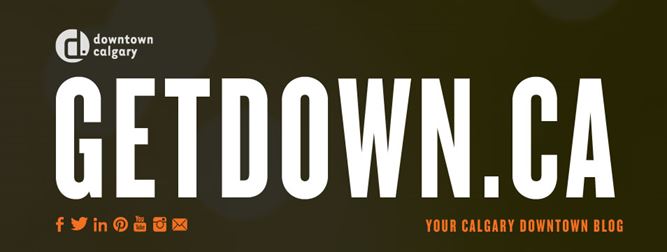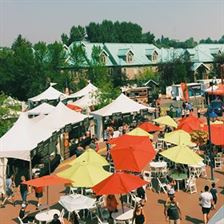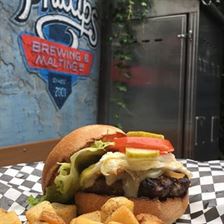By the end of the 1950s, Calgary had become a modern city! Oil was discovered in Leduc in 1947, and the unprecedented economic growth that came with it gave our city a massive population boost. Suburbs were built, consumerism was on the rise, and prosperity and security were the hallmarks of the decade! Downtown, the Renfrew Club had merged with the Petroleum Club and its meetings moved from the Palliser’s Sun Room to the Motor Car Supply building on Sixth Avenue SW.
Duke of Windsor leaving Calgary via rail (Retrieved from the Vancouver City Archives)
In April of 1950, the newly merged club issued their first honourary membership. In 1919, Edward, then Prince of Wales prior to his abdication, fell in love with an Alberta ranch south of Calgary. He purchased the site, known as E.P. (Edward Prince) Ranch after seeing it during the 1919 Royal Tour and visited Calgary again in 1950 to see his beloved ranch. The Duke of Windsor became the first honourary member of the Calgary Petroleum Club, and the first person to sign the club’s guest book. In 1958, the Petroleum Club moved into its current headquarters at 319 Fifth Avenue South West.
Oil wives of Calgary circa 1955 (Retrieved from the Glenbow Museum)
While the men met at the Petroleum Club, Calgary women formed the Oil Wives Club in 1952. The club has existed ever since, and, several years later, grew into the Association of Oil Wives Clubs, with chapters in cities all over Alberta. The group engaged in fundraising activities for local charities and provided a social outlet for women whose husbands were either away in the oil patches or simply working late and away from home often.
In 1955, CP Rail introduced its new flagship passenger train, The Canadian. This train ran a transcontinental route between Toronto and Vancouver, heavily advertising its Canadian Rockies leg. The Canadian would have been a regular fixture at the CP Rail station, right next to the Palliser Hotel.
Alberta anti-rat campaign poster (public domain)
In downtown restaurants and businesses, owners would have been on the lookout for rats. The war on rats was in full swing in the 1950s. Nowadays, if a rat is found in Calgary, it makes headline news. The province is arguably completely rat-free thanks to legislation from the 1950s when rat-control programs were instituted. Advertising campaigns were run to educate the public and encourage them to be on the lookout for any evidence of rats.
Everything Under the Sun, Calgary Board of Trade promotional poster (Retrieved from the University of Alberta archives)
Downtown restaurants and bars faced a change in 1957, when a plebiscite was held concerning the liquor laws. Mixed drinking, that is men and women drinking together in public, had been against the law since 1928. Calgary voted to allow mixed drinking, but bars wouldn’t abolish gender segregation province-wide until the late 60s. Another win for gender equality in Calgary in the 1950s came from the Chamber of Commerce, then the Calgary Board of Trade. In 1953, they revised their bylaws to allow women to become members. Today, the Calgary Chamber of Commerce is located at 106 6th Avenue SW.
This blog is part of a series created to compliment our Downtown Through the Decades program on the Downtown Summer Stage. Each weekly performance runs from 1pm - 4pm on Saturdays on Stephen Avenue, and highlights a popular musical genre from a specific decade in Calgary’s history. This week we have Kayla Hotte performing 1930’s Folk Country. While you stay tuned for our 1930’s blog next week, take a look at our previous blogs here.
Related Posts
| Tweet |
|





